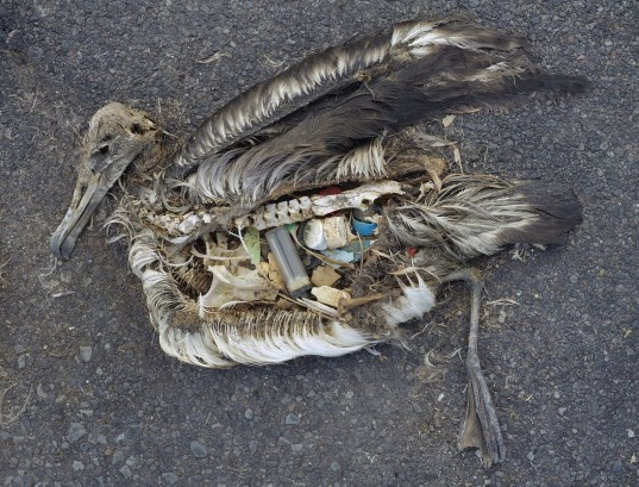Plastic trash is found in 90 percent of seabirds and by 2050, that number could be as high as 95%, as global production of plastics increases.
Image credit wikimedia
Study co-author Denise Hardesty, senior research scientist at the Australian federal science agency, said at the NY Times:
“It’s pretty astronomical.” She said the problem with plastics in the ocean is increasing as the world makes more of the stuff. “In the next 11 years we will make as much plastic as has been made since industrial plastic production began in the 1950s.”
Threat of plastic trash to seabirds is global, pervasive, and increasing
According to PNAS:
Plastic pollution in the ocean is a global concern; concentrations reach 580,000 pieces per km2 and production is increasing exponentially. Although a large number of empirical studies provide emerging evidence of impacts to wildlife, there has been little systematic assessment of risk. We performed a spatial risk analysis using predicted debris distributions and ranges for 186 seabird species to model debris exposure. We adjusted the model using published data on plastic ingestion by seabirds. Eighty of 135 (59%) species with studies reported in the literature between 1962 and 2012 had ingested plastic, and, within those studies, on average 29% of individuals had plastic in their gut.
via earthsky






Leave A Comment